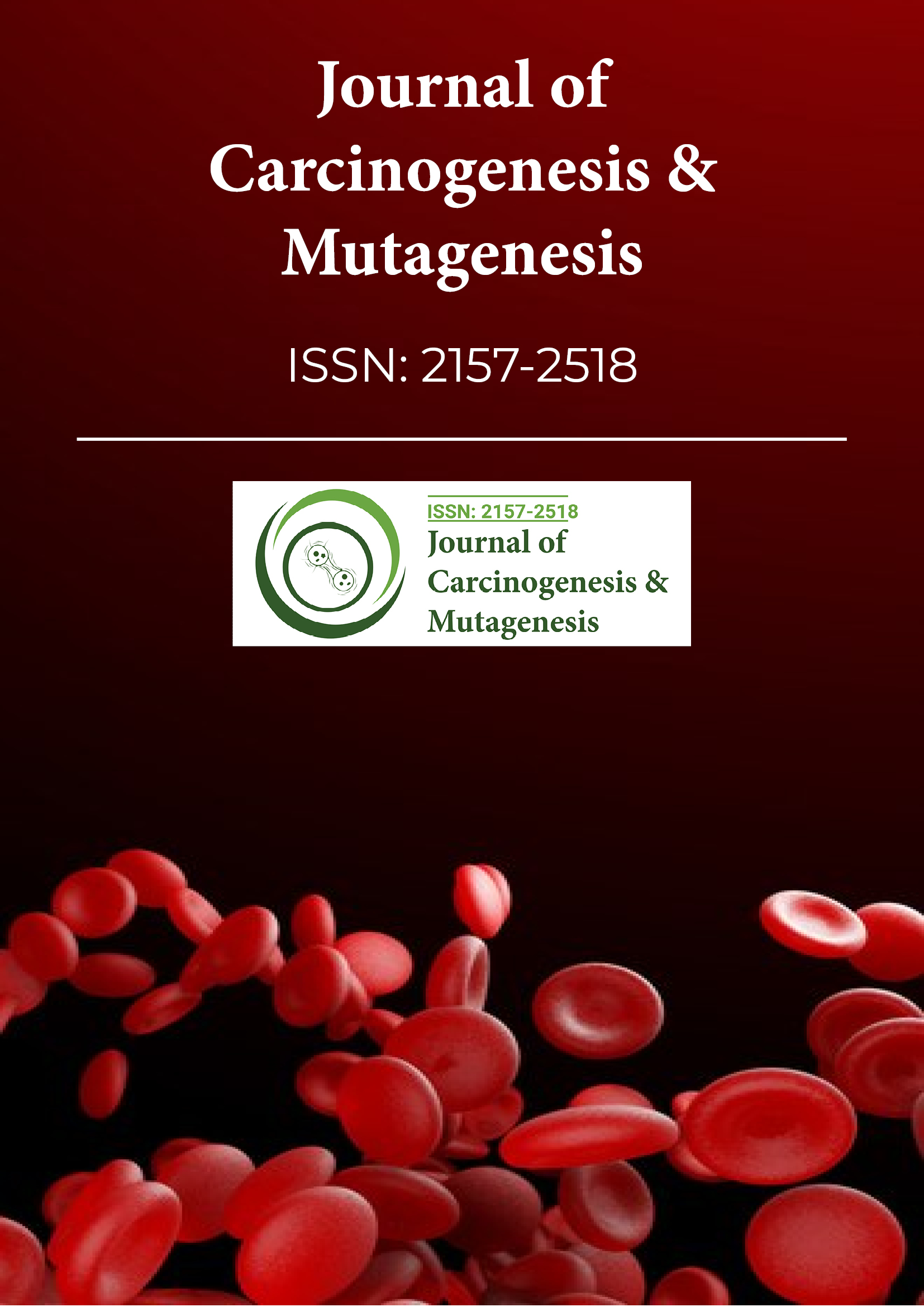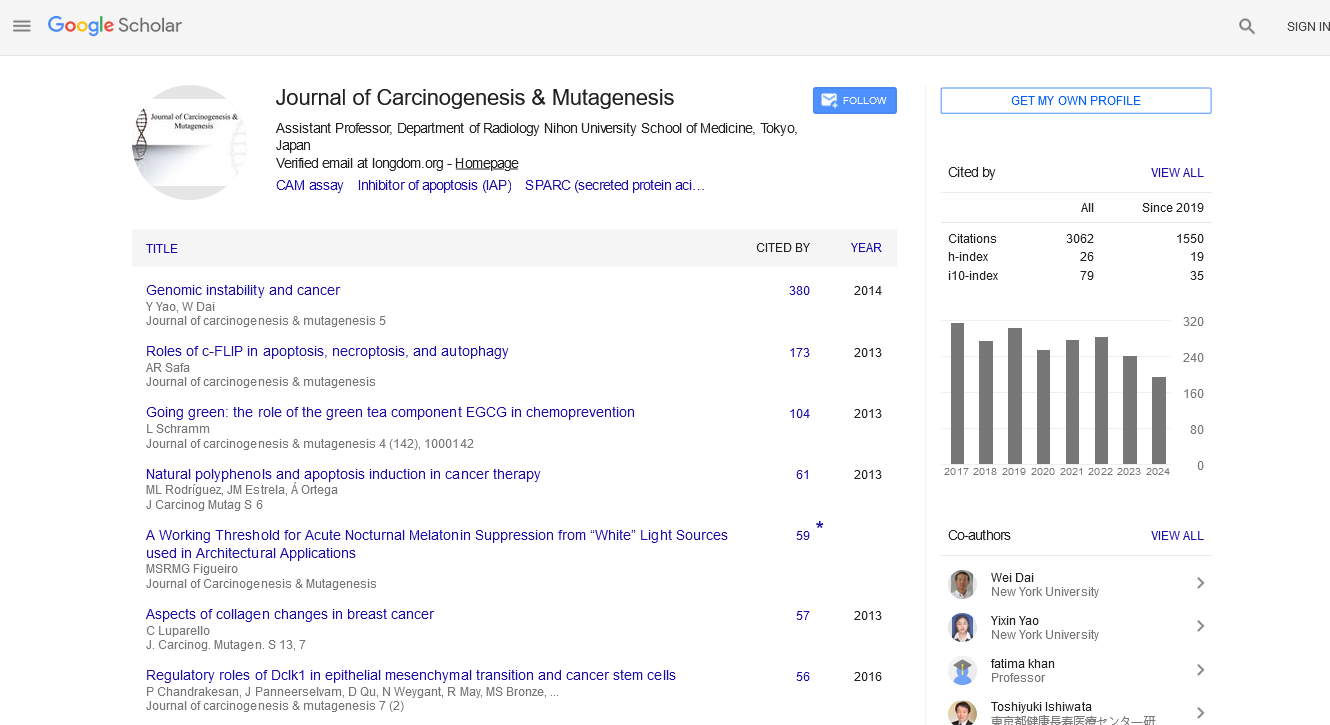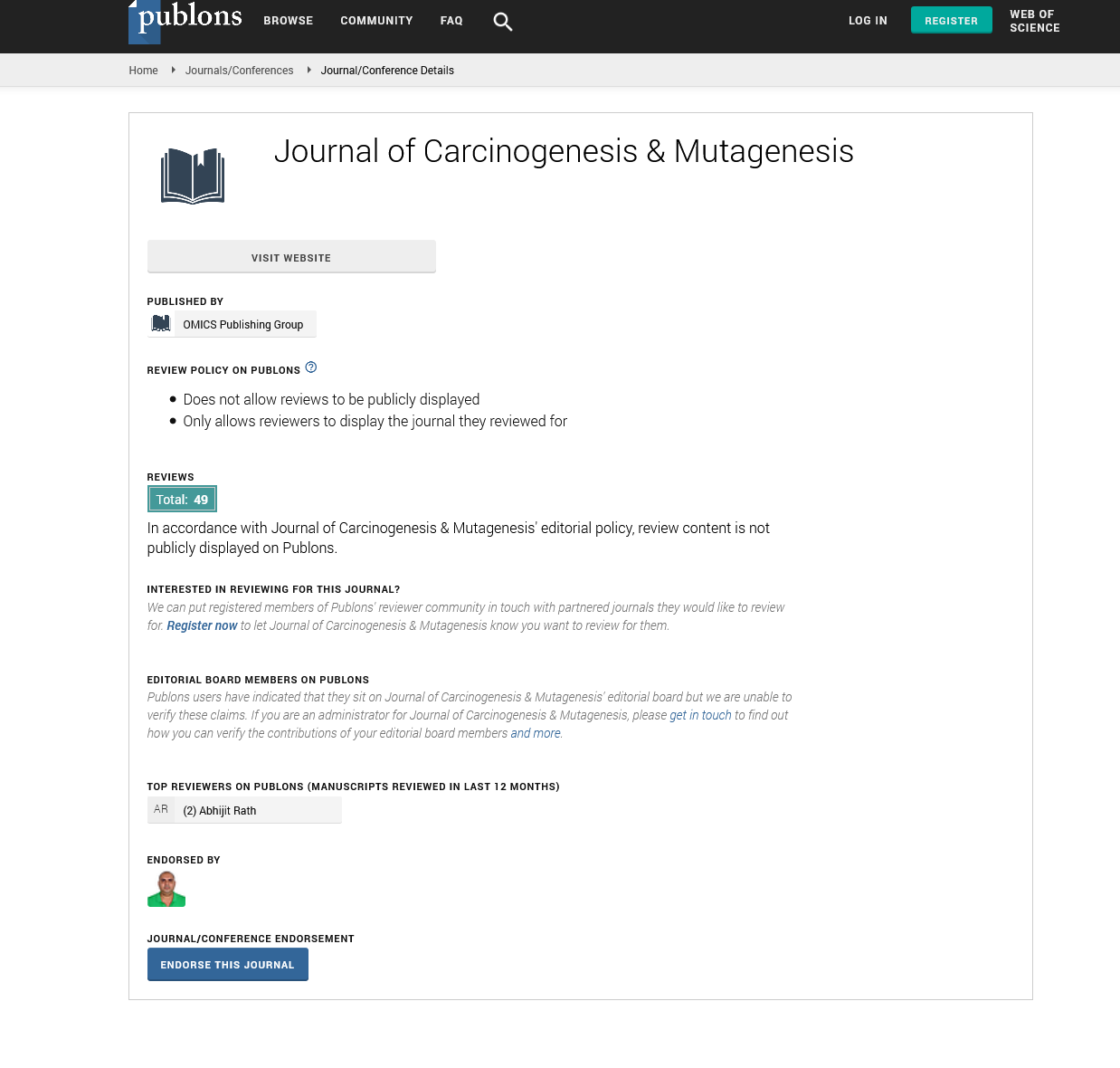Indexed In
- Open J Gate
- Genamics JournalSeek
- JournalTOCs
- Ulrich's Periodicals Directory
- RefSeek
- Hamdard University
- EBSCO A-Z
- OCLC- WorldCat
- Publons
- Geneva Foundation for Medical Education and Research
- Euro Pub
- Google Scholar
Useful Links
Share This Page
Journal Flyer

Open Access Journals
- Agri and Aquaculture
- Biochemistry
- Bioinformatics & Systems Biology
- Business & Management
- Chemistry
- Clinical Sciences
- Engineering
- Food & Nutrition
- General Science
- Genetics & Molecular Biology
- Immunology & Microbiology
- Medical Sciences
- Neuroscience & Psychology
- Nursing & Health Care
- Pharmaceutical Sciences
Commentary - (2022) Volume 13, Issue 6
A Productive Compartmental Strategy for Treating Brain Metastases from Breast Cancer
Mingzhao Wang*Received: 03-Oct-2022, Manuscript No. JCM-22-18983; Editor assigned: 05-Oct-2022, Pre QC No. JCM-22-18983 (PQ); Reviewed: 19-Oct-2022, QC No. JCM-22-18983; Revised: 26-Oct-2022, Manuscript No. JCM-22-18983 (R); Published: 03-Nov-2022, DOI: 10.35248/2157-2518.22.13.404
Description
Gliomas are a type of brain tumour whose most aggressive grades are thought to be cancer, and the main treatment for all grades is safe surgical resection. Gross complete resection is the surgical goal; less aggressive resection is used for tumours that may involve the eloquent brain. Expectant surveillance with serial imaging is employed in several situations when comparing risk vs benefit.
Regarding treatment methods, there is a lot of disagreement, especially for grade II lesions like grade II astrocytomas. The therapy methods from recent clinical studies are those indicated below.
Recommendations for Grade I (pilocytic astrocytomas) glioma treatment:
When complete surgical removal is not possible, radiation therapy or expectant care are often used. These uncommon lesions are typically noninvasive, are considered benign, and may be treatable by surgery.
Grade II (mixed gliomas, oligodendrogliomas, and low-grade infiltrative astrocytomas):
• Surgery is advised for grade II cases with the safest resection possible.
• Age>40 years, astrocytoma histology, greatest tumour size 6 cm, tumour crossing midline, and existence of neurologic deficit prior to excision are unfavourable prognostic markers; patients with up to 2 of these are low risk, whereas patients with 3 or more are high risk. In contrast, in grade II-III gliomas, specific molecular characteristics serve as positive prognostic indicators: The presence of an IDH mutation is a highly positive prognostic indicator for overall survival, and 1p19q codeletion is correlated with significantly enhanced progression-free and overall survival.
• Patients under 40 and those at low risk should be watched; those at high risk should get adjuvant chemotherapy or fractionated External Beam Radiation Therapy (EBRT).
• Low-grade astrocytomas typically get 45-54 Gy of radiation given in 1.8-2.0 Gy portions.
• Temozolomide 150-200 mg/m2/day PO on days 1-5 of a 28-d cycle for six to eight cycles is used as adjuvant therapy.
• Temozolomide 75 mg/m2 PO daily on days 1-21 or 150-200 mg/ m2 PO on days 1-5 of a 28-d cycle until disease progression or for a maximum of 24 cycles.
• The use of postoperative radiation therapy for tumours that are inoperable, still present, or have returned is common.
• Low-grade oligodendrogliomas are frequently treated with chemotherapy, especially when they have tumours with the 1p19q deletion, which is a sign for chemotherapy susceptibility.
The majority of patients in the United States and other industrialised countries that perform screening have localized breast cancer that is found by a screening mammogram; less frequently, individuals have a palpable tumour found by them or by a healthcare professional.
Stage 0 (Lobular Carcinoma in Situ [LCIS])
Options for management include the following:
• Only surveillance (ie, mammography)
• Monitoring and raloxifene (for postmenopausal women)
• Tamoxifen (for women of any menopausal status)
• Prophylactic bilateral mastectomy (usually in patients who are very concerned about breast cancer risk and have either a strong family history or mammographically dense breasts that impair surveillance)
• Wide excision is advised if stereotactic biopsy reveals LCIS. This may reveal invasive cancer or Ductal Carcinoma in Situ (DCIS) in 10-20% of instances, necessitating extra local or systemic therapy.
Despite the fact that surgical removal to negative margins is not advised, LCIS is linked to a 20-30% lifetime chance of developing invasive breast cancer, which can be ipsilateral or contralateral and have ductal or lobular origins. Pleomorphic LCIS is a variant of LCIS that needs to be treated with extra care, including excision to negative margins.
Citation: Wang M (2022) A Productive Compartmental Strategy for Treating Brain Metastases from Breast Cancer. J Carcinog Mutagen. 13:404
Copyright: © 2022 Wang M. This is an open-access article distributed under the terms of the Creative Commons Attribution License, which permits unrestricted use, distribution, and reproduction in any medium, provided the original author and source are credited.


